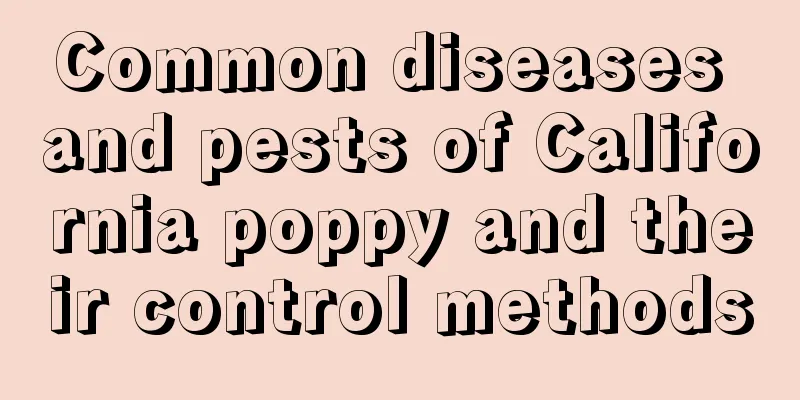Common diseases and pests of California poppy and their control methods

Common diseases of California poppy: black rotSymptoms of California poplar black rotMainly damages leaves. The lesions gradually spread from the lower leaves to the upper leaves. Part of the leaf surface turns yellow, and grayish-white spots with unclear outlines appear on the back, densely covered with grayish-white mold. Soon after, a layer of mold also forms on the leaf surface, and finally the leaves curl and dry up, resulting in poor fruit set, poor fruit growth, and early coloring. The roots of California poppies are fleshy. After black rot occurs, they may rot from the roots, and the stems will also show signs of black rot. The main reason is that California poppy is afraid of waterlogging. If the weather is rainy for a long time, the california will suffer. Spring in the south and June to July in the Pearl River Delta are the peak seasons for black rot of California poppies. Black rot control methods of California poplarThe rhizomes of plants that are wilting or have serious root diseases should be cut off in time, and the diseased holes should be sterilized. Control water in time and keep the soil in the pot dry. You can use 500 to 600 times diluted carbendazim to fill the pots. When irrigating, make sure to fully irrigate the plant's roots. Common pests of California poppies: WhitefliesPest symptomsWhiteflies have a very diverse diet and can harm a variety of vegetables, succulents and herbaceous plants. The main pests are nymphs, which concentrate on sucking sap from the back of California poplar leaves, causing the leaves to fade, turn yellow, and wilt. In severe cases, the plant may die. When it causes damage, it also secretes honey dew, which contaminates the leaves, causes fungal infection, affects the photosynthesis of the plant, and seriously affects flowering and fruit setting. Prevention and treatment methodsOld nymphs are mostly found on the lower leaves. Remove the old leaves and burn them. You can use 25% thiamethoxam (buprofezin) wettable powder or 2.5% cypermethrin or 20% cypermethrin (sulfuron) emulsifiable concentrate at a concentration of 2000 times for spraying once every 6 to 7 days for three consecutive times. You can also use smoke spray for fumigation 2-3 times in a row. |
<<: Common diseases of white clover and their control methods
>>: Diseases and prevention methods of Albizia Julibrissin
Recommend
What season is suitable for cutting succulent plants?
1. Beheading Season You must choose the right sea...
What is the best fertilizer for peppers?
Fertilizing time for peppers 1. After planting pe...
Can pineapple peel be used as fertilizer?
Pineapple peel as fertilizer Pineapple peel can b...
Tips for indoor flower cultivation and fertilization
1. Flower cultivation skills 1. Light: When growi...
What to do if aloe leaves turn yellow
1. Adapt to the environment When aloe vera is fir...
The difference between iris and iris
1. Different leaves Iris leaves appear to be rela...
How to ferment a small amount of sheep manure at home (how to naturally ferment sheep manure as fertilizer)
Sheep manure is used as fertilizer for growing fl...
Time and method of cutting of five-color plum
Cutting time of five-color plum The five-color pl...
How much celery yield per mu
Introduction to Parsley Parsley is a plant of the...
What are the cultivation methods and precautions of thorny plum
Growth habit of thornberry Barbary Apricot prefer...
Can rice water be used to water the peace tree? The correct way to water rice water
Watering the Peace Tree with Rice Washing Water R...
When is the best time to plant chrysanthemums?
Chrysanthemum has rich symbolic meanings and impl...
Planting of mountain roses
The selection of substrate for sowing mountain ro...
How to plant Dendrobium candidum
1. Sprouting Cutting bud propagation requires pla...
The flower language and symbolism of wintersweet
1. Flower Language The flower language of winters...









